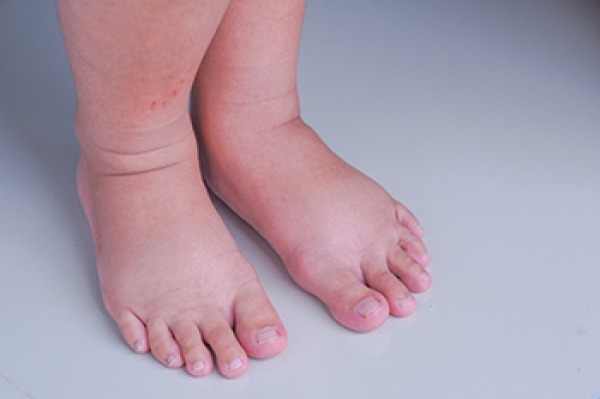Swelling in the hands, feet, and ankles—often described as water retention or edema—is a common issue, particularly among older adults and people with certain health conditions. Although mild swelling can be benign, persistent or severe swelling may signal an underlying health problem and should be evaluated by a medical professional.
This article explains what causes water retention, medically supported ways to reduce it, and lifestyle strategies recommended by experts to manage mild symptoms. All guidance here is based on reputable medical sources.

What Is Water Retention (Edema)?
Water retention, medically known as edema, occurs when excess fluid builds up in the body’s tissues. It often shows up as swelling in the feet, ankles, hands, or even the face.
Common causes of mild edema include:
-
Sitting or standing too long: Gravity causes fluid to pool in the lower limbs.
-
High sodium diet: Salt can increase fluid retention.
-
Hormonal changes: Fluctuations during menstruation or pregnancy can promote water retention.
-
Medications: Certain drugs (e.g., some blood pressure medications, steroids) can cause swelling as a side effect.
More serious causes include heart failure, kidney disease, liver disease, or deep vein thrombosis (DVT), which require medical evaluation. (Source: Mayo Clinic).
If swelling is sudden, severe, painful, or accompanied by shortness of breath, seek immediate medical help.
Medically Supported Strategies to Manage Mild Edema
For mild, lifestyle-related swelling without serious underlying causes, doctors often recommend these evidence-based approaches.
1. Reduce Salt Intake
Eating too much sodium is a major contributor to fluid retention. The World Health Organization (WHO) recommends consuming less than 5 grams (about one teaspoon) of salt per day to reduce health risks, including edema.
Tips:
-
Avoid processed foods high in salt.
-
Cook with fresh herbs and spices instead of salt.
(Source: WHO)
2. Stay Hydrated
While it might sound counterintuitive, drinking enough water actually helps prevent fluid retention. Dehydration can make the body hold onto water.
Experts often suggest 1.5–2 liters (6–8 cups) of water per day, though needs vary based on climate, activity level, and health status.
(Source: NHS)
3. Elevate the Affected Limbs
Raising swollen feet or hands above heart level helps fluid return to circulation. The Mayo Clinic advises elevating legs on pillows for short periods several times a day.
4. Move Regularly
Prolonged sitting or standing can worsen swelling. The Centers for Disease Control and Prevention (CDC) recommends adults get at least 150 minutes of moderate-intensity physical activity per week.
Simple options:
-
Walking.
-
Gentle cycling.
-
Leg and foot exercises if seated.
Regular movement improves circulation and can reduce fluid buildup.
(Source: CDC)
5. Wear Compression Stockings (If Advised)
For people with chronic mild swelling, compression stockings can help. These garments apply gentle pressure to the legs, supporting veins and preventing fluid accumulation.
Medical providers often recommend them for conditions like chronic venous insufficiency or mild edema. Always ask a doctor before starting compression therapy.
(Source: Cleveland Clinic)
6. Eat a Balanced, Low-Sodium Diet Rich in Potassium
Potassium helps balance sodium levels in the body, reducing the tendency to retain water. The American Heart Association (AHA) suggests eating potassium-rich foods as part of a heart-healthy diet.
Examples:
-
Bananas.
-
Oranges.
-
Avocados.
-
Spinach.
-
Sweet potatoes.
(Source: AHA)
7. Limit Alcohol Consumption
Excessive alcohol can promote dehydration and fluid retention. The CDC recommends moderation: up to 1 drink per day for women and 2 for men.
8. Maintain a Healthy Weight
Carrying excess weight can put more pressure on veins and lymphatic vessels, making swelling worse. Healthy weight management reduces this burden.
Weight loss plans should be tailored to individual health needs, ideally under professional guidance.
9. Avoid Prolonged Immobility During Travel
On long flights or car trips, fluid can pool in the legs. To help prevent this:
-
Stand and walk regularly.
-
Flex and extend ankles while seated.
-
Wear compression socks if advised.
(Source: NHS)
When to Seek Medical Advice
While the strategies above can help mild, lifestyle-related swelling, see a doctor if you experience:
-
Sudden or severe swelling.
-
Shortness of breath or chest pain.
-
Red, warm, or painful skin.
-
Significant changes in urination.
These symptoms may indicate serious conditions such as heart failure, kidney disease, liver disease, or blood clots, requiring prompt evaluation.
/assets/images/provider/photos/2549991.jpg)
Conclusion
Mild swelling in the hands and feet from water retention is often manageable with healthy lifestyle adjustments:
- Reduce salt.
- Stay hydrated.
- Keep moving.
- Elevate limbs.
- Eat potassium-rich foods.
However, it’s essential to monitor symptoms and consult a healthcare professional if swelling is persistent, severe, or worsening.
Managing fluid retention effectively supports overall cardiovascular health, comfort, and mobility—important goals for people of all ages.
References:
-
Mayo Clinic: Edema – Symptoms and Causes
-
NHS: Water Retention
-
Cleveland Clinic: Edema
-
American Heart Association: Potassium and Your Diet
-
CDC: Physical Activity Basics

